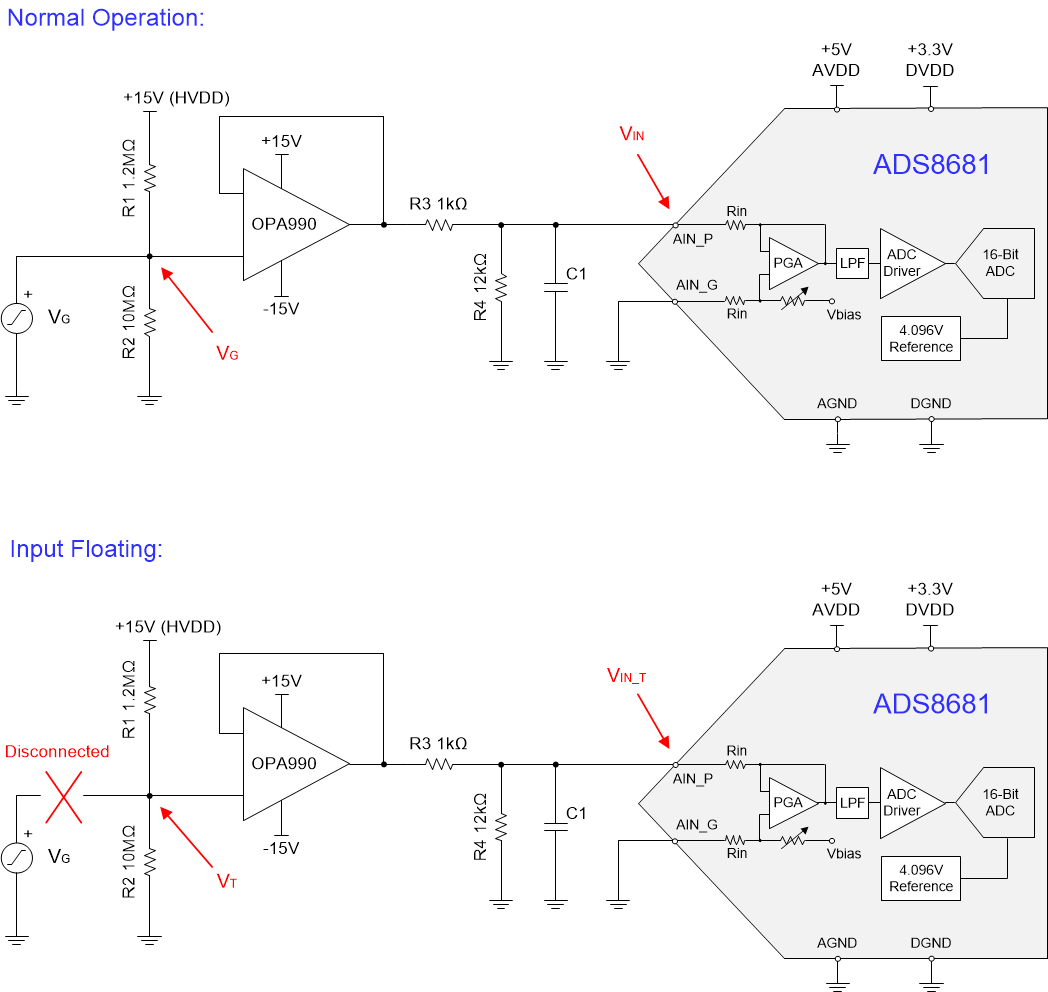SBAA507 March 2021 ADS8578S , ADS8584S , ADS8586S , ADS8588H , ADS8588S , ADS8598H , ADS8598S , ADS8661 , ADS8664 , ADS8665 , ADS8668 , ADS8671 , ADS8674 , ADS8675 , ADS8678 , ADS8681 , ADS8684 , ADS8684A , ADS8685 , ADS8688 , ADS8688A , ADS8688AT , ADS8689 , ADS8691 , ADS8694 , ADS8695 , ADS8698 , ADS8699 , OPA2990 , OPA4990 , OPA990
Design Description
This circuit shows a solution to detect if the ADS8681 successive approximation register (SAR) analog-to-digital converter (ADC) input is floating. The ADS8681 device features a significant amount of signal chain integration, including high resistive input impedance, a programmable gain amplifier (PGA), and an ADC input driver. These features eliminate the requirement for driving the ADC inputs with a high-bandwidth amplifier. Therefore, a low-bandwidth, low-cost amplifier in a non-inverting unity gain configuration can be used in a solution for detecting a floating input. This solution has a minimal impact on the system performance metrics including signal-to-noise ratio (SNR) and total harmonic distortion (THD). This circuit is useful in end equipment such as: Analog input module, Servo drive functional safety module, Motor drives, and Factory automation and control.
